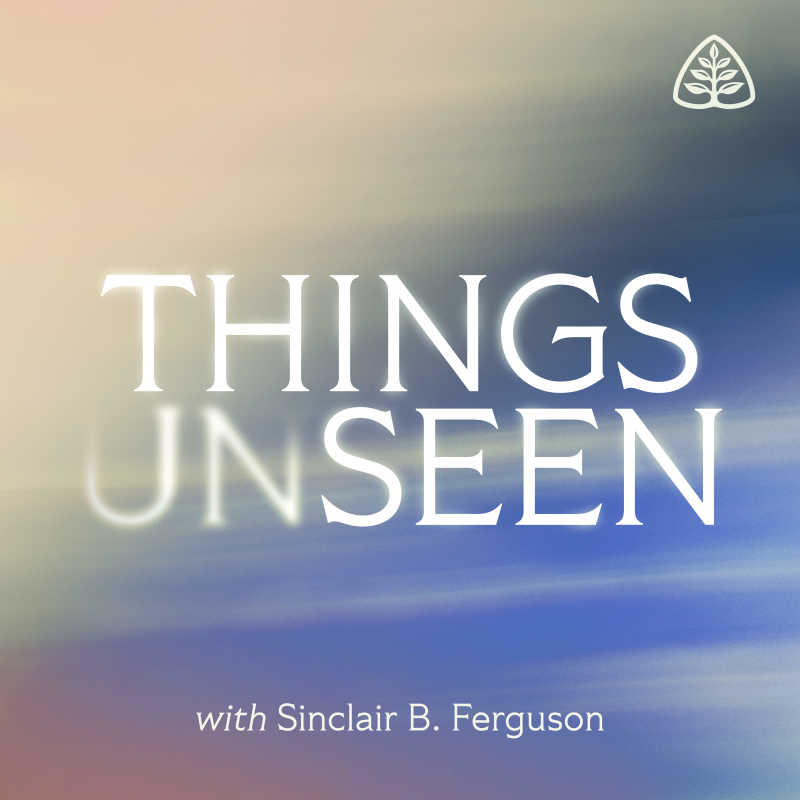A Foretaste of Christ’s Glory

Little did Peter, James, and John know that when they saw the glory of Christ in His transfiguration, He was preparing them to witness His shame in the Garden of Gethsemane. Today, Sinclair Ferguson makes a connection between these two moments.
Transcript
Welcome to Things Unseen, where this week our theme is big moments in the life of the Lord Jesus. We’ve thought about Him being baptized at the Jordan and then about Him being in the region of Caesarea Philippi. And I want to think today of Him being up in the highlands, traditionally on Mount Hermon, often called the Mount of the Transfiguration.
Just before the transfiguration, Jesus said that some of the disciples would not see death before they saw “the kingdom of God” (Luke 9:27), or as Matthew puts it, before they saw “the Son of Man coming in his kingdom” (Matt. 16:28), or as Mark puts it, until they saw “the kingdom of God after it had come with power” (Mark 9:1). And these words are linked by the Gospel writers by a rare time marker. The transfiguration took place just a week after Jesus had said this. Perhaps His words include more, something greater than the transfiguration, but they surely certainly include the sight that the inner circle of disciples saw, Peter and James and John. He took them with Him, and they saw a foretaste of what was still to come.
I imagine many of us have had that odd experience of feeling that you have a sense of something that’s going to happen, and then it does happen. I remember watching a Philadelphia Flyers ice hockey match years ago when one of their star players got the puck in his own half and began to make his way towards the opponent’s goal. And from up above where I was seated, I could almost trace in the ice where he would need to weave his way through the defenders to get there. Now, I’m certainly not an ice hockey expert, but the amazing thing was he did exactly what I envisaged and scored a brilliant goal. I felt a bit like a chess grandmaster seeing ten moves ahead.
And in a way, the transfiguration was like that. It was a moment that prophesied the future. It was a real, unique, historical event. But it was also a glimpse of what was to come, a kind of preview of the final glory of the Lord Jesus. Remember Jesus’ prayer in John 17:24, that we would be with Him to see His glory, the glory He had with His father before the world began, and Peter and his two friends were getting a glimpse of that. Remember how Peter says later, “We were eyewitnesses of His majesty when He received honor and glory because we were with Him there on the holy mountain” (see 2 Peter 1:16–18).
Actually, it was such an overwhelming experience that it seems to have emotionally drained the three disciples who were with Jesus—they could hardly stay awake. But they seem to have been sufficiently allowed to realize somehow that Moses and Elijah had appeared, and they were talking with Jesus about the new exodus that He was going to accomplish at Jerusalem—the redemption and salvation He would accomplish by His death and resurrection. And Peter, of course Peter, blurted out some inane comments about building shelters for the three of them. But then the glory cloud of the presence of God came down and enveloped them, and God spoke very directly, “Listen to My Son,” and Moses and Elijah had disappeared from view, and Jesus was there in solitary glory.
We don’t know if this kind of experience was actually common for Jesus Himself when He was praying privately. But even if it was, this was a big moment because He wanted Peter and James and John to be with Him to see it. When John wrote the words of John 17:24 I quoted a moment ago, he must surely have remembered that day, years before, when he saw Jesus, His whole being full of glory.
But why did Jesus want these three men, in particular, to witness this? No doubt it was to reassure them that He truly was the Son of God incarnate, but perhaps it was also because He knew these same three disciples would later be stationed near Him in the garden of Gethsemane on the evening of His crucifixion. And there they would see Him in the depths of agony, as He faced the shame of the cross and its humiliation and asked that, if it was possible, the cup might be removed from Him. He surely wanted them to see these two times of prayer were actually connected. The sight of His glory must have made the sight of His shame almost unbearable. They slept in Gethsemane as well as on the mountain, but He also wanted them to see where that shame would eventually lead. The glory required the shame. The shame led to the glory.
So, the transfiguration was a big moment for Jesus and a big moment for these three disciples, and it’s a big moment for us too. It reminds us of this: that the One who is Himself glorious, the Son of God came,
Bearing shame and scoffing rude,
In my place condemned He stood,
Sealed my pardon with His blood.
Yes indeed, “Hallelujah! what a Savior!”

